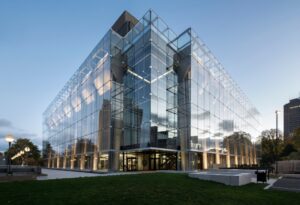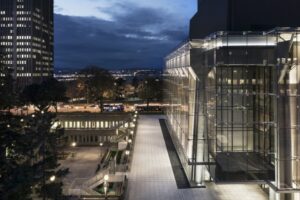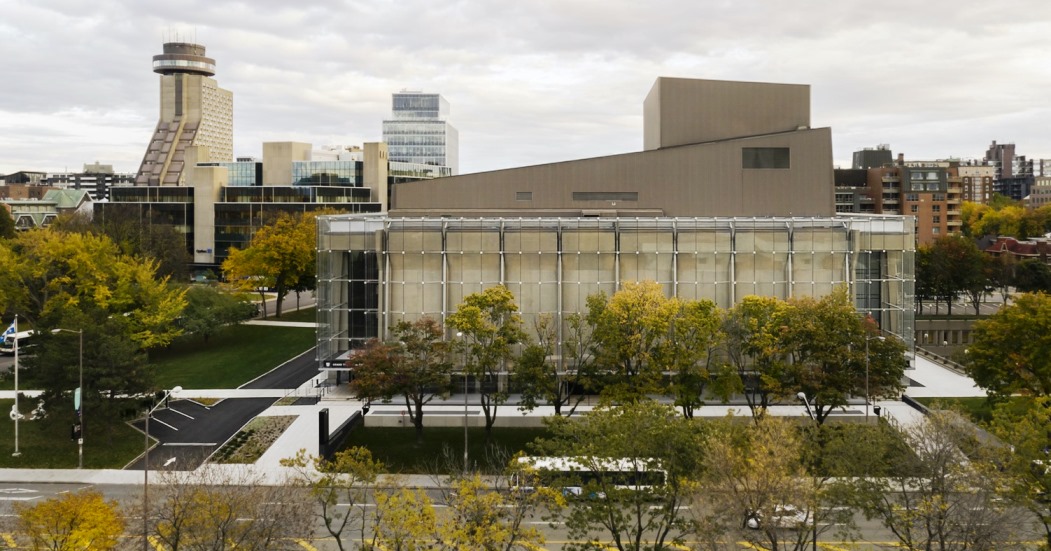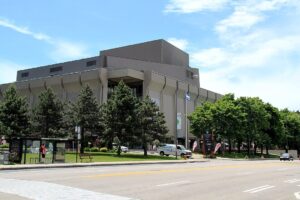With the exception of some architects, there aren’t many fans of the Brutalist architectural fad that swept the world in the 60s. The solid-no-nonsense raw concrete with its lack of ornamentation was sometimes appropriate for government buildings and penitentiaries, which often want to convey stability and strength.
But few appreciated it for anything else…certainly not for arts-related structures.
However, the Grand Théâtre de Québec in Québec City, Québec, Canada has long been prized by many for its brutalist architecture.
Now, for those who aren’t fans of concrete exteriors, help has come in the form of a glass wall, part of a major $16 million ($12 million U.S.) renovation project.
The architects at Lemay and at Atelier 21 were tasked with restoring and protecting the building’s crumbling outer shell and its emblematic Jordi Bonet mural, inside.
 The new envelope is a delicate response to a complex problem. In developing corrective measures for the building’s many weaknesses, the transdisciplinary team produced a sustainable, innovative solution: adding a transparent, glass curtain wall to the concrete structure.
The new envelope is a delicate response to a complex problem. In developing corrective measures for the building’s many weaknesses, the transdisciplinary team produced a sustainable, innovative solution: adding a transparent, glass curtain wall to the concrete structure.
The glass casing was carefully designed in continuity with the structure developed by Victor Prus, the original architect, and the mural work of Jordi Bonet, enshrined by Prus’ protective outer shell.
Discrete and almost immaterial at times, it reflects its surroundings and becomes the main interface with the city, adding an additional theatrical act in the discovery of this significant Quebecois work.
 As designed, the thin wall of protective glass shields the Grand Théâtre from the elements by creating a secondary, tempered envelope housing a low-flow heat recovery and thermal mass system.
As designed, the thin wall of protective glass shields the Grand Théâtre from the elements by creating a secondary, tempered envelope housing a low-flow heat recovery and thermal mass system.
The system is both energy-efficient and economical. Beyond its primary function, the new layer acts as an extension of the original building it protects, using the same finely tuned structural logic and composition.
Any alteration to the architecture had to be severely limited, says Eric Pelletier, architect and design principal at Lemay.
The building’s fragility paired with the inability to directly access the concrete anchors posed a major challenge; with work on the building proceeding during normal daytime and evening theatre operations.
Unless otherwise credited, all photographs are by Stephane Groleau.


